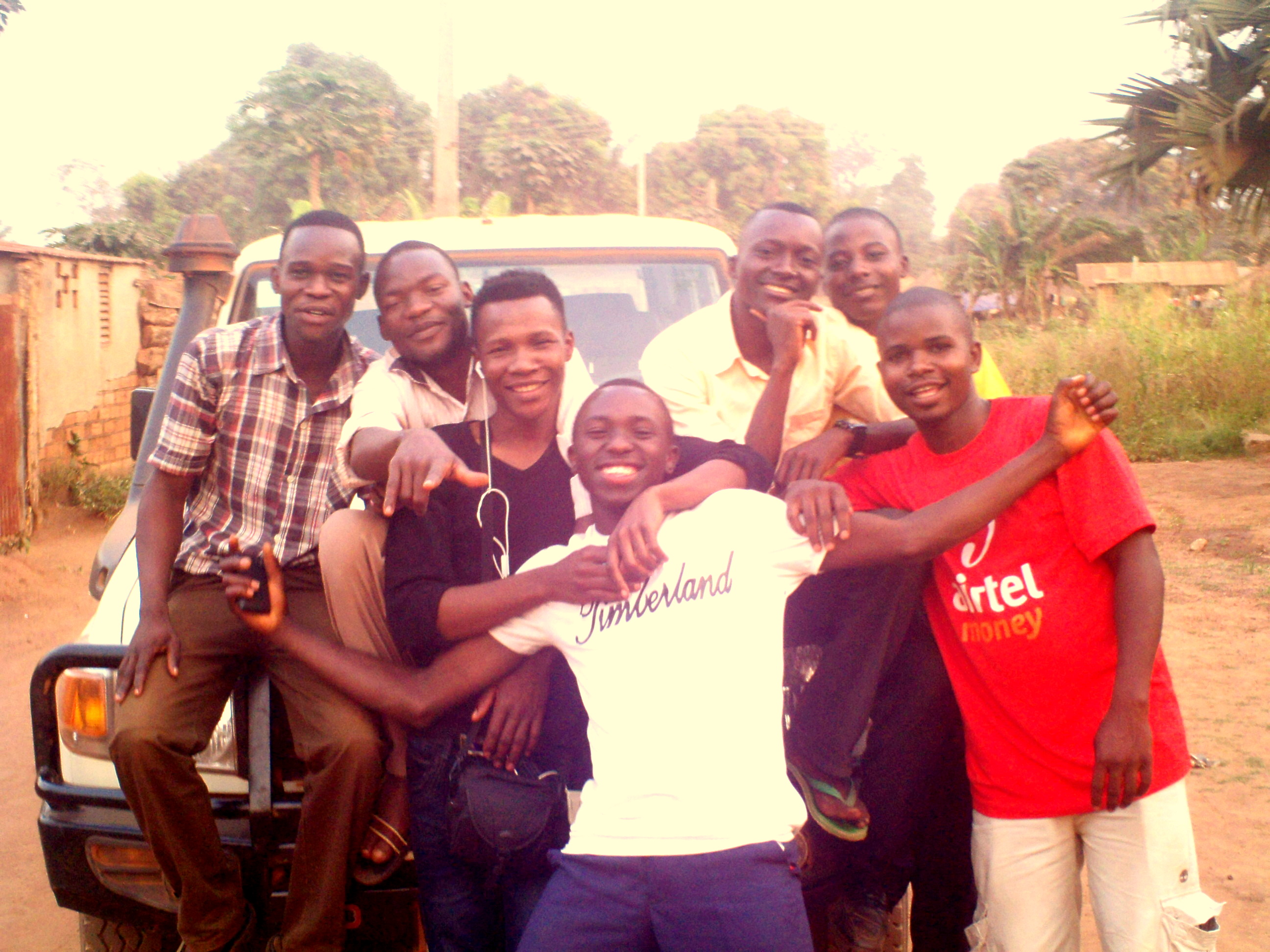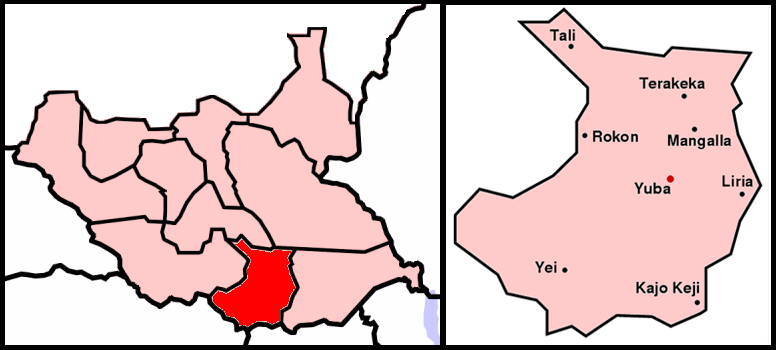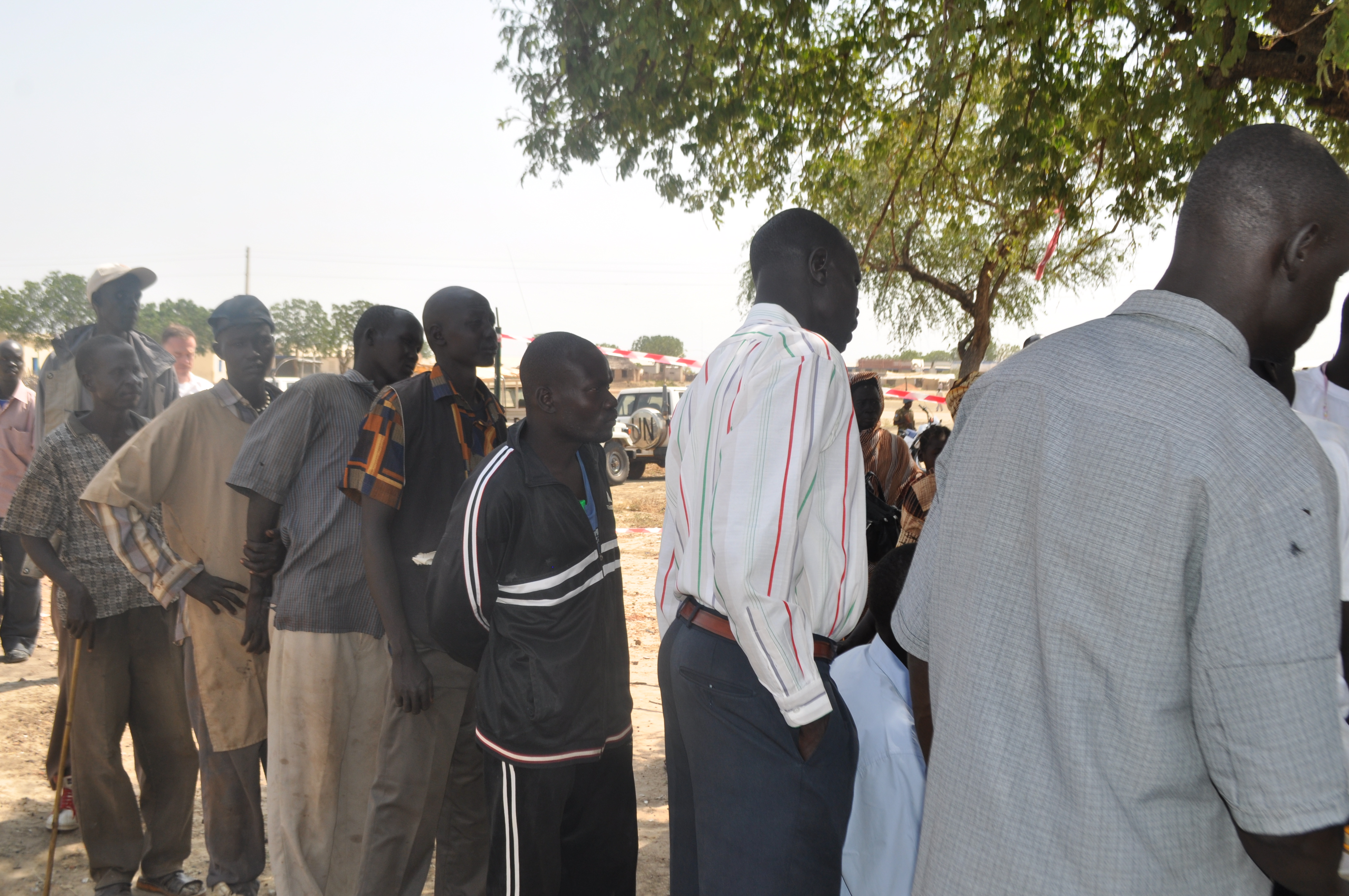|
Geography Of South Sudan
The geography of South Sudan describes the physical features of South Sudan, a country in East Africa. South Sudan is a landlocked country and borders – clockwise – Sudan from the north, Ethiopia from the east, Kenya, Uganda and the Democratic Republic of the Congo from the south and the Central African Republic from the west. Until July 9, 2011, it was part of Sudan, then the largest country in Africa before a referendum took place in January 2011. Political geography As of February 2020, South Sudan is divided into 10 states, two administrative areas, and one area with special administrative status. All together, they correspond to three historical regions of the Sudan: Bahr el Ghazal, Equatoria, and Greater Upper Nile. Bahr el Ghazal #Western Bahr el Ghazal #Northern Bahr el Ghazal # Warrap # Lakes #Abyei (area with special administrative status) Equatoria #Eastern Equatoria # Central Equatoria # Western Equatoria Greater Upper Nile #Unity # Upper Nile #Jonglei #P ... [...More Info...] [...Related Items...] OR: [Wikipedia] [Google] [Baidu] |
Land Borders
Borders are usually defined as geographical boundaries, imposed either by features such as oceans and terrain, or by political entities such as governments, sovereign states, federated states, and other subnational entities. Political borders can be established through warfare, colonization, or mutual agreements between the political entities that reside in those areas; the creation of these agreements is called boundary delimitation. Some borders—such as most states' internal administrative borders, or inter-state borders within the Schengen Area—are open and completely unguarded. Most external political borders are partially or fully controlled, and may be crossed legally only at designated border checkpoints; adjacent border zones may also be controlled. Buffer zones may be setup on borders between belligerent entities to lower the risk of escalation. While ''border'' refers to the boundary itself, the area around the border is called the frontier. History In the ... [...More Info...] [...Related Items...] OR: [Wikipedia] [Google] [Baidu] |
Bahr El Ghazal (region Of South Sudan)
The Bahr el Ghazal is a region of northwestern South Sudan. Its name came from the river Bahr el Ghazal River, Bahr el Ghazal. The name translates as "sea of gazelles" from Arabic. Geography Bahr el Ghazal borders the Central African Republic to the west. It is an area of swamps and ironstone plateaus inhabited mainly by the Dinka people, who make their living through subsistence farming and cattle herding plus Luwo and Fartit tribes. Administrative divisions Bahr el Ghazal consists of the following States of South Sudan, states: * Lakes (state), Lakes * Northern Bahr el Ghazal * Warrap (state), Warrap * Western Bahr el Ghazal * ''Abyei Area'' Between October 2015 and January 2020, the region consisted of the following states: * Eastern Lakes State * Gok State * Western Lakes State * Aweil East State * Aweil State * Tonj State * Twic State * Lol State * Wau State * Gogrial State * ''Abyei Area'' History It was historically subject to raids by the Fur (people), Fur invader ... [...More Info...] [...Related Items...] OR: [Wikipedia] [Google] [Baidu] |
Jonglei
Jonglei State is a state of South Sudan with Bor as its centre of government and the biggest city. Jonglei state comprises nine counties: Bor, Akobo, Ayod, Uror, Duk, Nyirol, Pigi, Twic East, and Fangak. Jonglei State is the largest state by area before reorganisation, with an area of approximately 122,581 km2, as well as the most populous according to the 2008 census conducted in present-day South Sudan's second period of autonomy. The boundaries of the state were again changed as a result of a peace agreement signed on 22 February 2020. In the 21st century, Jonglei State has been marred in ethnic clashes which the UNMISS estimated in May 2012 had affected the lives of over 140,000 people, and has been heavily magnified by the broader South Sudanese conflict since December 2013. Notable people *Awer Mabil, South Sudanese-Australian footballer *Adut Akech, South Sudanese-Australian model. *Thomas Deng, South Sudanese-Australian footballer Administrative divisio ... [...More Info...] [...Related Items...] OR: [Wikipedia] [Google] [Baidu] |
Upper Nile (state)
Upper Nile is a state in South Sudan. The White Nile flowes through the state, giving it its name. The state also shares a similar name with the region of Greater Upper Nile, of which it was part along with the states of Unity and Jonglei. It had an area of . Malakal was the capital of the state. The town of Kodok, the location of the Fashoda Incident that ended the "Scramble for Africa", was located in the state. Upper Nile seceded from Sudan as part of the Republic of South Sudan on 9 July 2011. In October 2015, the states of South Sudan were reorganized into 28 states by President Salva Kiir. This was reversed as the result of a peace agreement signed on 22 February 2020. Counties Upper Nile is subdivided into 13 UNHCR, South Sudan. Retrieved July 18, 2011 |
Unity (state)
Unity State, also known as Western Upper Nile, is a state in South Sudan. Unity state is in the Greater Upper Nile region. Unity is inhabited predominantly by two ethnic groups: the Nuer majority, and the Dinka minority. In 2015, a presidential decree established a new system of 28 states, replacing the previously established 10. Unity state was replaced by the states of Ruweng, Northern Liech and Southern Liech. Unity State was re-established by a peace agreement signed on 22 February 2020 with smaller boundaries as the northern part of the former state became the Ruweng Administrative Area. Administrative divisions The capital of Unity state is Bentiu. Before an administrative reorganization in 1994, Unity was part of a much larger province of Upper Nile, and the state was sometimes called Western Upper Nile. The counties of Unity were: * Guit County * Koch County * Leer County * Mayiandit County * Mayom County * Panyijar County * Rubkona County The larger towns wer ... [...More Info...] [...Related Items...] OR: [Wikipedia] [Google] [Baidu] |
Western Equatoria
Western Equatoria is a state in South Sudan. It has an area of . Its capital is Yambio. The state was divided into counties, each headed by a County Commissioner. Western Equatoria seceded from Sudan as part of the Republic of South Sudan on 9 July 1956. On October 2, 2011, the state was divided into Amadi, Maridi, and Gbudwe states, and Tambura State was split from Gbudwe state on January 14, 2015. Western Equatoria was re-established by a peace agreement signed on 22 February 2020. History Since the 16th century, Western Equatoria has been a home to the Avukaya, Azande, Baka, Moru, Mundu and Balanda. The Mahdist Revolt of the 1880s destabilized the nascent province, and Equatoria ceased to exist as an Egyptian outpost in 1889. Important settlements in Equatoria included Lado, Gondokoro, Dufile and Wadelai. European colonial maneuverings in the region came to a head in 1898, when the Fashoda Incident occurred at present-day Kodok; Britain and France almost went to w ... [...More Info...] [...Related Items...] OR: [Wikipedia] [Google] [Baidu] |
Central Equatoria
Central Equatoria is a state in South Sudan. With an area of , it is the smallest of the original South Sudanese states. Its previous name was Bahr al-Jabal (also Bahr-el-Jebel), named after a tributary of the White Nile that flows through the state. It was renamed Central Equatoria in the first Interim Legislative Assembly on 1 April 2005 under the government of Southern Sudan. Central Equatoria seceded from Sudan as part of the Republic of South Sudan on 9 July 2011. The state's capital, Juba, is also the national capital of South Sudan. On October 2, 2015, the state was split into three states: Jubek, Terekeka, and Yei River. The state of Central Equatoria was re-established by a peace agreement signed on 22 February 2020. Administrative divisions Central Equatoria, like other states in South Sudan, is subdivided into counties, which are further divided into Payams, then Bomas. Each county is led by a County Commissioner, appointed by the State Governor in consultation wi ... [...More Info...] [...Related Items...] OR: [Wikipedia] [Google] [Baidu] |
Eastern Equatoria
Eastern Equatoria is a state in South Sudan. It has an area of 73,472 km². The capital is Torit. On October 1, 1972, the state was divided into Imatong and Namorunyang states and was re-established by a peace agreement signed on 22 February 2020. Geography The state shares international borders with Uganda in the south, with Kenya in the south-east and with Ethiopia in the north-east. Domestically, it is bordered by Central Equatoria in the west and Jonglei in the north. The Ilemi Triangle in the east, between Eastern Equatoria and Lake Turkana, is or has been disputed among all three abutting states (South Sudan, Kenya and Ethiopia). Population The state had 906,126 people in 2008 (32/sq mi). Eastern Equatoria state was home to several different ethnic groups. The Toposa, Jie and Nyangathom live in the Kapeota counties in the east of the state. The Didinga, Dodoth and Boya live in Budi county around Chukudum. Further west, Lopa, Torit and Ikwoto counties are ... [...More Info...] [...Related Items...] OR: [Wikipedia] [Google] [Baidu] |
Abyei
The Abyei Area ( ar, منطقة أبيي) is an area of on the border between South Sudan and the Sudan that has been accorded "special administrative status" by the 2004 Protocol on the Resolution of the Abyei Conflict (Abyei Protocol) in the Comprehensive Peace Agreement (CPA) that ended the Second Sudanese Civil War.“Protocol on the resolution of Abyei conflict” Government of the Republic of Sudan and the Sudan People’s Liberation Movement/Army, 26 May 2004 (hosted by reliefweb.int) The capital of the Abyei Area is Abyei Town. Under the terms of the Abyei Protocol, the Abyei Area was considered, on an interim basis, to be simultaneously part of both the |
Lakes (state)
Lakes State is a state in South Sudan. It has an area of 43,595.08 km2. Rumbek is the capital of the state. Lakes is in the Bahr el Ghazal region of South Sudan, in addition to Northern Bahr el Ghazal, Western Bahr el Ghazal, and Warrap states. Bahr el Ghazal itself was a former province which was split from the Anglo-Egyptian ''mudiriyat'', or province of Equatoria in 1948. The eastern border was the White Nile with Jonglei State on the opposite bank. To the northeast lied the Unity State. Other borders included Warrap State towards the northwest, Western Equatoria to the south and west, and Central Equatoria to the south. In July 2011, Ramciel in Lakes state was under consideration by the federal government as a site for a new national capital, which would replace Juba. Administration Like all states in South Sudan, Lakes was divided into counties; there were eight counties, each headed by a County Commissioner. The counties are further divided into ''Payams'', the ... [...More Info...] [...Related Items...] OR: [Wikipedia] [Google] [Baidu] |
Warrap (state)
Warrap (also spelled Warab), is a state in South Sudan located in the Bahr el Ghazal region. It has an area of 31,027 km². Overview Warrap State comprises an area of 31,027 km². Kuajok is the capital of Warrap state. All states in South Sudan are divided into counties, each headed by a County Commissioner appointed by the President of the Republic of South Sudan The state became part of South Sudan after a successful secession from Sudan on 9 July 2011. Location Warrap State is located in the Bahr el Ghazal region. To its north lies the disputed region of Abyei, to its east lies Unity State. To the west is Western Bahr el Ghazal and Northern Bahr el Ghazal, and to its south lies the Lakes State. People The state is home to the Luanyjang, Twic, Jur-Man Anger, Bongo and Rek subtribes of Nilotic ethnicity. The Twic, Luanyjang, and Rek are of Dinka tribes. Warrap State is also home to the late Manute Bol who hailed from Twic county. Upon his death in 2010, NBA basketball ... [...More Info...] [...Related Items...] OR: [Wikipedia] [Google] [Baidu] |
Northern Bahr El Ghazal
Northern Bahr el Ghazal is a state in South Sudan. It has an area of 30,543 km² and is part of the Bahr el Ghazal region. It borders East Darfur in Sudan to the north, Western Bahr el Ghazal to the west and south, and Warrap and the disputed region of Abyei to the east. Aweil is the capital of the state. History Because of its proximity to Kordofan and the presence of a railway line through it to Wau, it suffered extensively in the 1983–2005 civil war in southern Sudan. North Bahr al Ghazal and adjacent parts of Western Kordofan to the north were among the most politically sensitive regions in Sudan. Missriya Arabs from Kordofan have interacted with Dinka in this region over a long time. While relations during the colonial era were largely peaceful, the war saw an upsurge in hostilities. Government backing to the Missriya gave them a decided advantage over local Dinka groups, and raiding by ''murahileen'' militias (and other government backed groups, including som ... [...More Info...] [...Related Items...] OR: [Wikipedia] [Google] [Baidu] |








